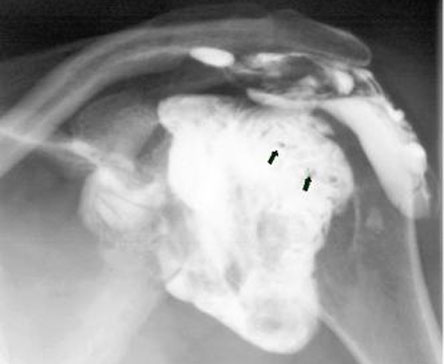Hakan Çift, Feyza Ünlü Özkan, Sena Tolu, Ali Şeker, Mahir Mahiroğulları
Department of Orthopedics and Traumatology, İstanbul Medipol University, İstanbul, Turkey
Department of Physical Medicine and Rehabilitation, Fatih Sultan Mehmet Training and Research Hospital, İstanbul, Turkey
Department of Physical Medicine and Rehabilitation, İstanbul Medipol University, İstanbul, Turkey
Abstract
Objectives: This study aims to assess and compare the efficacy of subacromial tenoxicam and steroid injections in treating patients with shoulder impingement syndrome.
Patients and methods: Forty patients having shoulder impingement syndrome with findings of rotator cuff tendinitis or subacromial bursitis on magnetic resonance imaging were included in the study. Patients were randomized into two subacromial injection groups: patients in the first group (10 males, 10 females; mean age 45.3 years; range 32 to 67 years) were administered 20 mg tenoxicam three times by weekly intervals, and patients in the second group (8 males, 12 females; mean age 46.5 years; range 29 to 73 years) were administered 40 mg methylprednisolone acetate just for once. Visual analog scale (VAS), active range of motion (ROM) of the shoulder joint, and Disabilities of Arm, Shoulder and Hand (DASH) questionnaire scores were evaluated at baseline, six weeks after treatment, and first year.
Results: Visual analog scale, DASH, and active ROM scores in both groups were statistically significantly improved. No statistically significant difference was detected between subacromial tenoxicam and steroid injections in terms of post-treatment VAS, DASH, and active ROM scores. Mean pre- and post-treatment VAS scores in tenoxicam group were 7.8 (range, 3-9) and 2.6 (range, 2-4), respectively. Mean pre- and post-treatment VAS scores in steroid group were 6.2 (range, 3-10) and 3.6 (range, 0-7), respectively. Mean pre- and post-treatment DASH scores in tenoxicam group were 59.4 (range, 45-80) and 14.7 (range, 8.3-25.8), respectively. Mean pre- and post-treatment DASH scores in steroid group were 56.7 (range, 33.3-85.8) and 18.1 (range, 0-69.2), respectively. Although the improvement in active ROM was higher in the steroid group, difference between two groups was not statistically significant.
Conclusion: Both subacromial tenoxicam and steroid injections may be successfully used in the treatment of patients with impingement syndrome. Subacromial tenoxicam injection may be preferred as a first-line intervention in these patients thanks to its safe profile.

